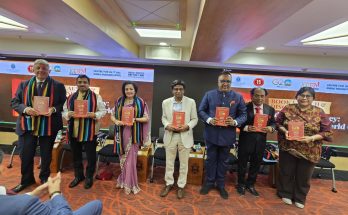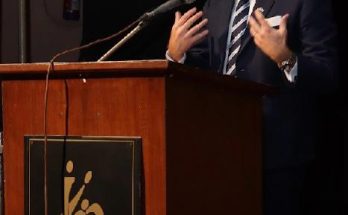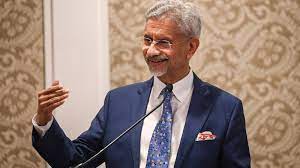At first knock, the temptation for all stake-holders, particularly the non-Hindutva sections of the ruling BJP, would be to blame it all on the recent streak of ‘intolerance’ that has been sneaked into the nation’s body-politic and media discourse all over again. By doing so, both the friends and adversaries of Prime Minister Narendra Modi have sought to deflect at least some of the criticism that should otherwise rest on his shoulders and/or feet, or doorstep.
There is no denying the sense of ‘intolerance’ that the ‘Dadri killing’ and the attacks on non-conformist litterateurs reflected – for the intelligentsia to reflect upon. For starters, these are opinion-makers, who grudgingly or overwhelmingly wanted Congress-NDA out, and the Modi-led BJP in, during the long, robust and cacophonic run-up to the 2014 parliamentary polls. Their opinions mattered then, they have mattered now.
The last time round, the ‘Hindutva’ forces were elated that even the elite, who were opposed to their kind of politics had come to accept Modi – rather, they did not have a choice. This time round, they went back onto their ideological hobby-horse and refused to hear the ‘sane voice’ that it was to them in the immediate earlier round. In seeking to distance PM Modi, the Centre and the BJP leadership from the ‘Hindutva’ hara-kiri, they moved on from the unsustainable argument to the ridiculous.
Saying that ‘Law and Order’ was a State subject was irresponsible enough. Arguing as to how the PM could be held responsible for whatever went wrong in whichever part of the country – and in this kind of communal/intolerant situation – was worse. Modi was no more the Chief Minister of Gujarat. He was already the Prime Minister of India. He or his sympathisers/supporters could not choose Madison Avenue Garden for praising him, and the ‘sense of intolerance’ nearer home to protect him.
Vote for change
The fact is ‘Hindutva’ as an issue and vote-bank cannot win elections. The ‘Hindutva’ votes would go to the BJP, and only BJP outside of Maharashtra. There, the party would have to view for the same viz the Shiv Sena ally, if they were to part ways. Today, thanks to the Bihar results, the BJP would not be as provocative towards the Sena as it had been in recent weeks and months. The Sena could provoke the BJP, instead, and possibly going beyond Maharashtra politics and State-centric issues.
Vajpayee won in the past because he sought ‘vote for change’. Better or worse still, he asked the voters to ‘give us a chance’ – sort of going down to begging for votes, from the new generation. Modi represented that ‘change’ in his time, and his vote-share and seat-share went beyond the ‘Hindutva’ vote-bank. He filled the vacuum in the aspiration-bound Indian’s thought-process ahead of the parliamentary elections, and the latter was as multi-faceted as he was multi-pronged.
The fact is that ‘Ayodhya’ did not win elections for Vajpayee. It gave an electoral face for the traditional BJP/RSS voters, giving them the broad-based ‘Hindutva’ name. The Vajpayee-Advani duo’s cleverly calculated/manipulated poll strategy that mixed, matched and mis-matched the ‘mandir’ and ‘mandal’ issues did not take the BJP too far in 1991 elections, where the ‘Rajiv Gandhi assassination’ might have twisted the tale, a bit.
The ‘Ayodhya demolition’ (1992) did not win the subsequent Uttar Pradesh Assembly polls a year later. The ‘trickle-down effect’ of ‘Hindu consolidation’, if at all helped the SP-BSP combine of backward-Dalit votes in 1993. The ‘Gujarat riots’ diverted the Opposition’s attention in the State from what was possible to the impossible in their own realm.
The Congress had lost the State to the Janata Party very long ago, and in the Gujarat of the Eighties, it had come to represent the BJP, rather than Morarji Desai’s forgotten Congress (O) segment. Rather, the ‘Gujarat riots’ might have served the limited purpose of the party, both at the State and national levels, to rally behind Modi, lest they should be seen as sacrificing principles for power at the Centre – as the Congress had come to be seen, earlier.
Blind men and the elephant
At the end of the day, it was a story of the ‘Five blind men of Hindoostan and the elephant’. Candidate Modi did not promise anything to anyone. He only flagged various concerns in the minds of various sections of the Indian voter, young and old, new and old, viz the then Congress Government and Prime Minister Manmohan Singh.
They breathe inspiration into their own aspirations and wanted to believe – and rather believed – that Modi was going to deliver on all those promises that he did not make. Whether Modi and the BJP believed in it or not, the average Indian voter believed in his ‘Gujarat model’ of development without knowing what it was, then or now, then and now. So, to blame Modi on what he has not delivered since becoming PM would be patently and blatantly wrong. But then that’s what electoral scenes are all about.
The Bihar poll results are representative of the regionalised character of the nation’s post-reforms politics, as India continues to move away from the Independence era sentiments, to brass-tack issues of living and earning. While telling the world that the priorities of the voter in one more State in the Union are different in national and regional-level elections, the Assembly poll results have also consolidated the BJP’s position as a near-permanent replacement for the Congress as the ‘national alternative’ in the regional context.
Non-BJP collective
The alternative to the BJP just now, as was the case with the Congress since the Seventies, may not be the Congress, but a non-BJP ‘collective’. It’s thus not a possible return to 2004 or 2014, but initially to the Nineties, but with a difference. With the Left losing teeth at the national-level, the Congress alone could try and play the facilitator at the national-level but the party has to come to terms with the ground realities, which has nothing really to do with Rahul Gandhi’s acceptance levels, now or later.
The ‘non-BJP’ Opposition would find it even more difficult than in the past to accommodate Mamata and the Left in West Bengal, and the Congress and the Left in Kerala, among others. The SP-BSP confusion in UP is not dissimilar, either, so could well be the JD(U)-RJD differences, which are not difficult to fathom, and for the BJP to try and exploit in the weeks and months to come.
It implies a few things for the fate of the national party/parties. The Congress would have to fight back even more than in 2004, if it has to reckon for a return to power at the Centre, even remotely. Two, the Congress would have to fight to retain its 20-per cent vote-share from the parliamentary polls, the worse ever since it entered the poll fray as far back as 1937, if not earlier.
The message is also for the BJP. It is a reminder that the 31-per cent vote-share that the party got in the company of allies like the Akali Dal, Shiv Sena and Ram Vilas Paswan’s LJP was as much a vote for an alliance as for Modi’s prime ministerial candidacy. Their votes remain(ed) constant, and Modi and Modi’s are the variables.
Non-committed votes
It’s thus that Modi could swing non-committed voters, whose ranks across the country are growing, in Lok Sabha polls in their collective favour. For reasons to live up to the individual’s imagination-centred aspirations, he ended up swinging the Bihar vote against the self in the current Assembly polls – the contribution from the rest remaining near-constant, despite the so-called ‘Manjhi votes’ supposedly having boosted the BJP-NDA vote-share.
All of it boils down to one thing. For right reasons and wrong, the ‘Modi magic’ has not worked as much on the ‘development agenda’ front as it had promised – be it in real terms or in electoral terms. He needs to learn from the past, both of the self in native Gujarat and of the rival Congress at the national-level. The voter is a constantly complaining and eternally expectant customer. His expectations may be few at the aspiration level, but clear in delivery-terms.
By the very definition, the ‘non-committed’ or ‘swing voters’ are as non-committal as they swing — themselves and the poll results with them. They may be swayed by empty sloganeering and the social media campaign of the BJP-Modi type, not because they believe in what is said but because they are ready for a ‘change’ at the helm, and give a new face his ‘chance’ to ‘change’. In this case, not only is Modi seen as changing the face of India, but also has not seemingly changed his own face from the days of ‘Gujarat riots’.
(The writer is Director, Chennai Chapter of the Observer Research Foundation, ORF, the multi-disciplinary Indian public-policy think-tank, headquartered in New Delhi. The views expressed in this article are solely those of the author).
Author Profile
Latest entries
 DiplomacyDecember 28, 2015Maldives 2016: At multiple cross-roads
DiplomacyDecember 28, 2015Maldives 2016: At multiple cross-roads DiplomacyDecember 23, 2015Maldives: Adopting the China model?
DiplomacyDecember 23, 2015Maldives: Adopting the China model? DiplomacyDecember 7, 2015Chennai floods: Has it anything to do with climate change?
DiplomacyDecember 7, 2015Chennai floods: Has it anything to do with climate change? DiplomacyNovember 13, 2015Maldives: End of emergency, what next?
DiplomacyNovember 13, 2015Maldives: End of emergency, what next?










